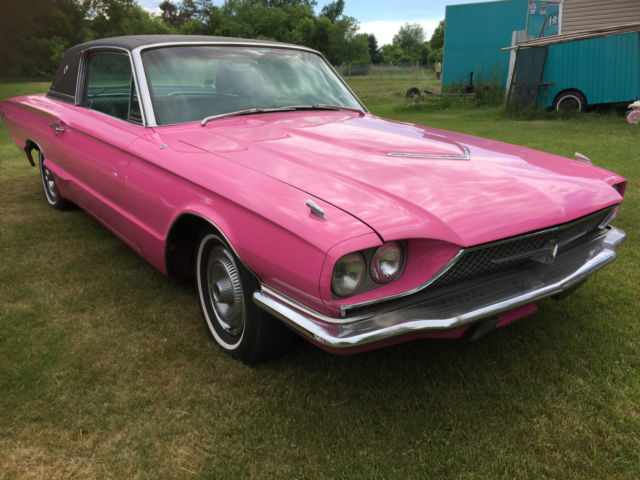

Why so heavy? It came from the robust unibody and all the gizmos Ford added to it (power everything and the wiring to match) – including sequential tail lights, designed for a ’64 intro but actually not introduced for another year. The T-bird was not a dimensionally “large” car compared with most full sizes, and the weight didn’t make the T-bird the greatest performer or handler.

heavier than a Country Squire and 700 lbs. Not for nothing were the new cars nicknamed “Flair birds” later on.īy 1964 GM had introduced a proper T-bird rival, Buick’s Riviera, but the Thunderbird was still king of the “personal cars,” despite a couple of disadvantages – namely weight.Īt ~4,600 lbs., the Landau hardtop was 600lbs. John Najjar gave the car a new and flashy interior filled with switches, dials, and chrome – loads of chrome on almost every surface. Creating the Flairīecause it was a costly unibody car, underneath, much of the structure was retained from the “bullet,” but you wouldn’t have known by looking – inside or out. Sales of the “bullet” just weren’t as strong as the “square,” so Boyer and his team took the older themes – in Boyer’s words they took the best elements of the previous three cars, but in practice it was mostly the idea of the ’58 – and created something that was still contemporary for 1964. The ’58-‘60 “square bird” gave way to Alex Tremulis’ fighter-jet inspired, clean-lined “Bullet bird” in 1961, but when it came time for the next generation, Ford revisited the ‘58.

It was popular enough to defy even the 1957-58 recession. It looked like a fifties dreamboat fresh off the motor show stand, but it was also practical and luxurious in a way no previous Ford had been. The 1958 Thunderbird that emerged – the “Squarebird” – was a home run. “Sports car” fans were furious when Ford added two rear seats to the Thunderbird in 1958 – but they were the only ones who disliked it.įord GM Lewis Crusoe had seen the original T-bird as a halo car and a needed response to the Corvette, but the T-bird was not a money maker and Crusoe quietly had stylist Bill Boyer start work a four-seat replacement as early as March of ‘55.


 0 kommentar(er)
0 kommentar(er)
